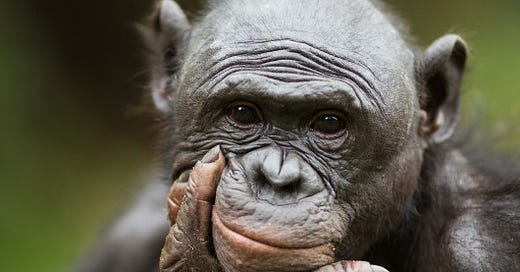The Mind-Reading Apes: Bonobos Adjust Their Communication Based on Human Knowledge
New research challenges our assumptions about theory of mind in nonhuman primates.
Do Bonobos Know What You Know?
For years, primatologists have debated whether our closest relatives, the great apes, possess a "theory of mind"—the ability to infer what others know or don’t know. While chimpanzees have shown signs of understanding another’s perspective, the question has remained unresolved for bonobos. A new study published in PNAS1 by L…
Keep reading with a 7-day free trial
Subscribe to Primatology.net to keep reading this post and get 7 days of free access to the full post archives.



